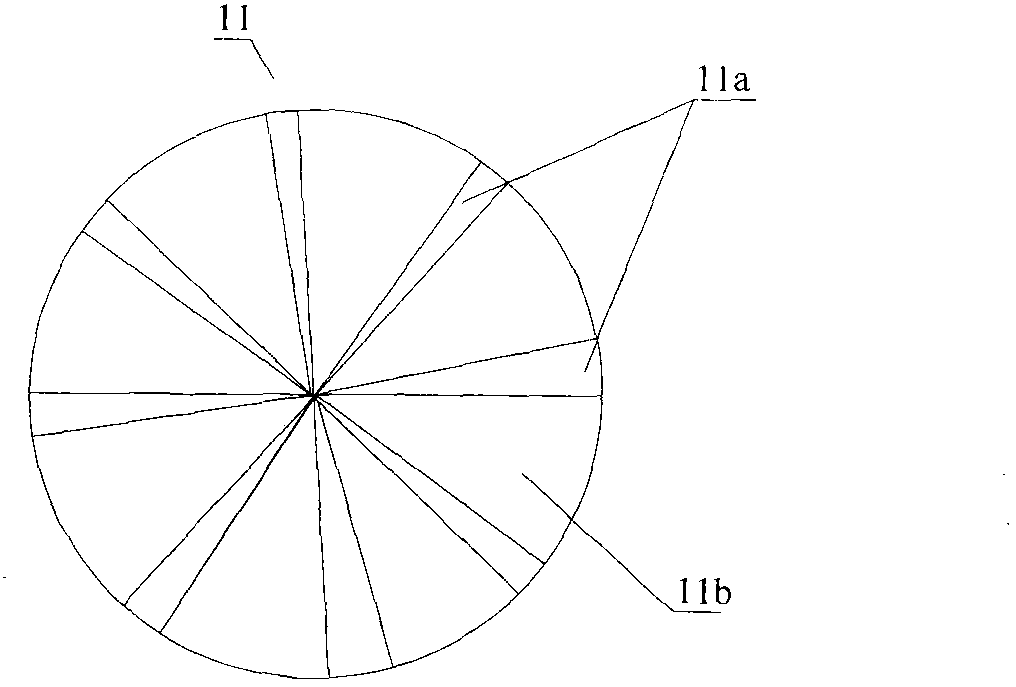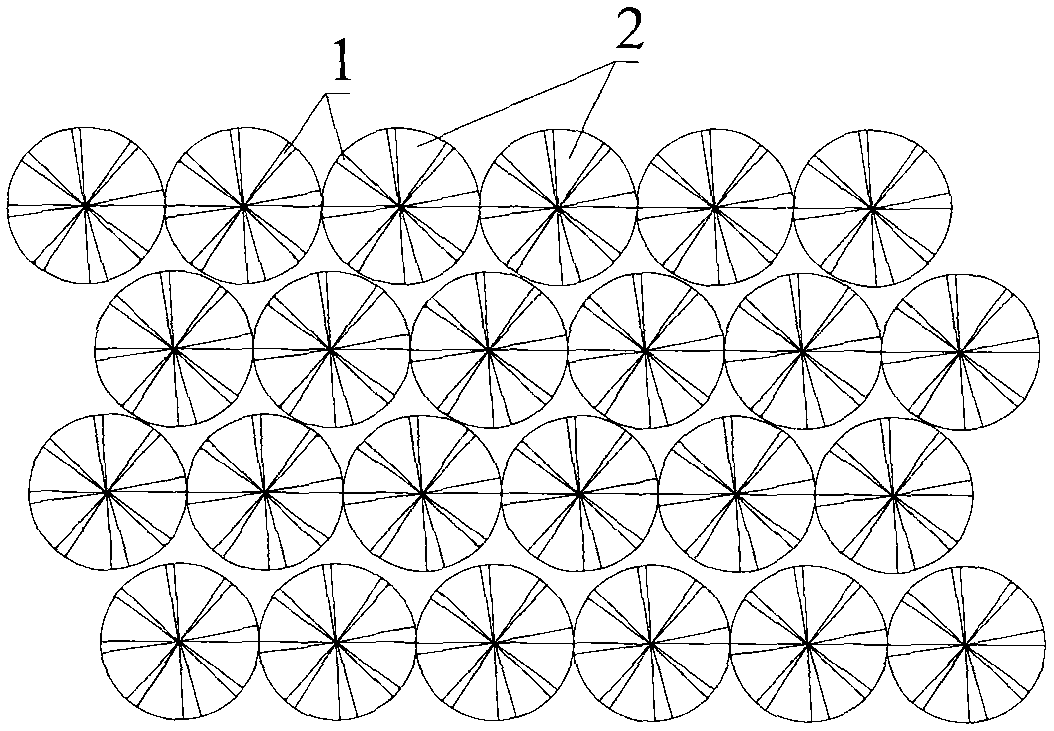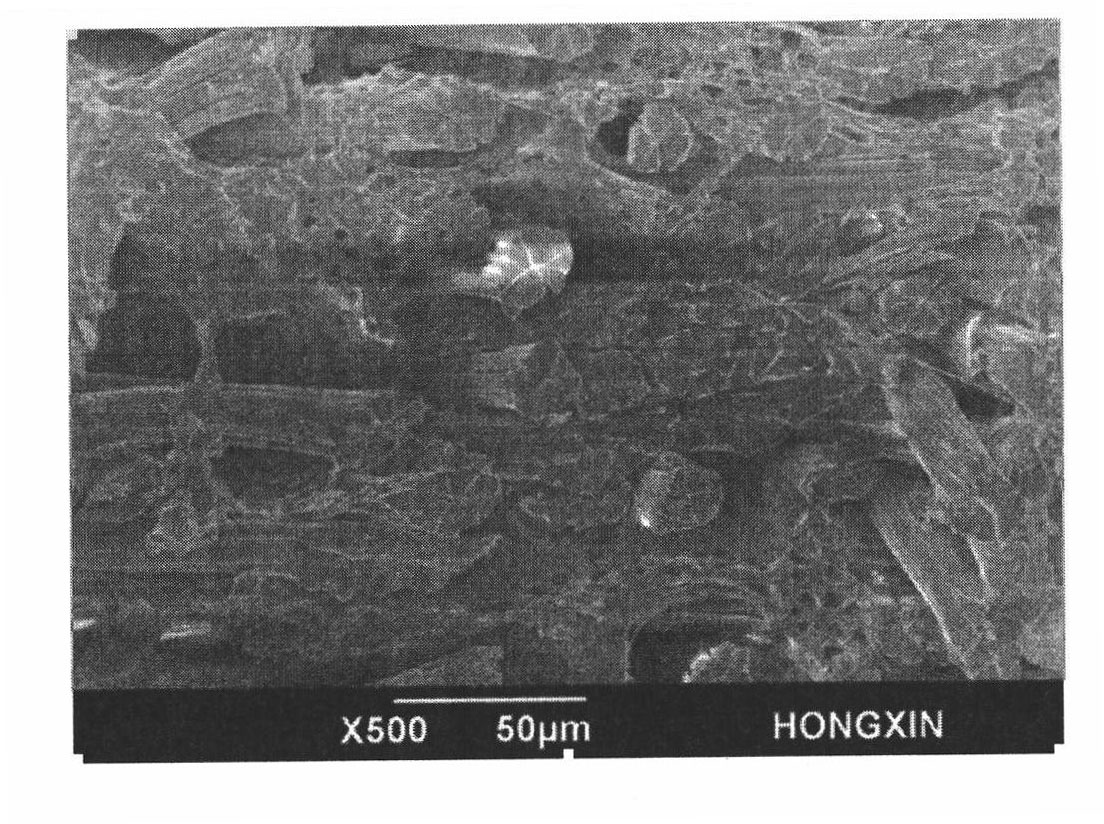Raising method of artificial leather
A technology of artificial leather and fleece, applied in textile and papermaking, fiber processing, roughening and other directions, can solve the problem of inability to use two-component microfiber
- Summary
- Abstract
- Description
- Claims
- Application Information
AI Technical Summary
Problems solved by technology
Method used
Image
Examples
Embodiment 1
[0063] 1. Preparation of composite fibers:
[0064] Take 25 parts of polyethylene terephthalate chips and put them into polyester spinning screw extruder, take 75 parts of polycaprolactam chips into polyamide spinning screw extruder, melt and knead them at 280℃ , the mixed product is subjected to such as figure 1 The 8-split spinneret shown is extruded, and the following examples all use this spinneret extrusion molding to obtain 8-split as-spun fibers, and the as-spun fibers are filled between the fiber skeleton and the fiber skeleton. The lobes between the fibers are composed of polyethylene terephthalate and the lobes are polycaprolactam;
[0065] The as-spun fibers were drawn sequentially by 1.8 times and 1.7 times, oiled with 4wt% silicone oil, and heat-set at 70°C to obtain multifilaments with a fineness of 2.22dtex, and then cut into 51mm composite fibers. The composite fiber samples were tested and the results are listed in Table 1.
[0066] 2. Preparation of non-wo...
Embodiment 2
[0080] 1. Preparation of composite fibers:
[0081] Take 17 parts of polyethylene terephthalate chips and put them into a polyester spinning screw extruder, take 83 parts of polycaprolactam chips and put them into a polyamide spinning screw extruder, melt and knead them all at 275°C, The kneading product is extruded through a spinneret to obtain 8 lobes of nascent fibers, the nascent fibers are composed of a fiber skeleton part and a split part filled between the fiber skeletons, wherein the fiber skeleton part is composed of poly pairs Ethylene phthalate, split part is polycaprolactam;
[0082] The as-spun fibers were drawn sequentially by 1.6 times and 1.5 times, oiled with 4wt% silicone oil, and heat-set at 70°C to obtain multifilaments with a fineness of 2.42dtex, and then cut into 51mm composite fibers. The composite fiber samples were tested and the results are listed in Table 1.
[0083] 2. Preparation of non-woven fabric:
[0084] Unpack the composite fiber prepared...
Embodiment 3
[0093] 1. Preparation of composite fibers:
[0094] In this example, 16.5 parts of polyhexamethylene adipamide chips and 83.5 parts of polybutylene terephthalate chips are taken as spinning raw materials, and the rest of the preparation process is the same as in Example 1. The composition is polyhexamethylene adipamide, the split part is polybutylene terephthalate, the fineness is 2.23dtex, and the length is 50mm.
[0095] 2. Preparation of non-woven fabric:
[0096] Unpack the composite fiber prepared in step 1, comb and needle punch to make a density of 0.26g / cm 3 , Gram weight is 573g / cm 2 of non-woven fabrics.
[0097] 3. Non-woven impregnation:
[0098] The impregnation process of the nonwoven fabric is the same as in Example 1 in this example, and the PU synthetic leather is obtained after the impregnation.
[0099] 4. Fiber opening treatment:
[0100] In this example, the fiber-opening treatment process is the same as in Example 1, and the superfine fiber PU is sy...
PUM
| Property | Measurement | Unit |
|---|---|---|
| length | aaaaa | aaaaa |
| depth | aaaaa | aaaaa |
| density | aaaaa | aaaaa |
Abstract
Description
Claims
Application Information
 Login to View More
Login to View More - R&D
- Intellectual Property
- Life Sciences
- Materials
- Tech Scout
- Unparalleled Data Quality
- Higher Quality Content
- 60% Fewer Hallucinations
Browse by: Latest US Patents, China's latest patents, Technical Efficacy Thesaurus, Application Domain, Technology Topic, Popular Technical Reports.
© 2025 PatSnap. All rights reserved.Legal|Privacy policy|Modern Slavery Act Transparency Statement|Sitemap|About US| Contact US: help@patsnap.com



